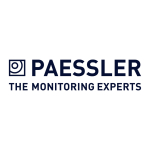The most valuable feature for me particularly within the enterprise space and what CA does is that they provide an integrated central approach to monitoring. No matter what tool we're using whether it's a phone system or whether it's a storage system, whether it's Unix or Windows, whether it's an access point or a firewall, it can all be seen in a common pane of glass where you can see everything. All of our staff can all be trained on the same tool and then other people can see all the dependent infrastructure within the same tool.
It allows our communication to happen much more effectively. The primary benefit for us at this stage in our approach is that we've been able to cut outages by about 300%. For us in terms of an integrated management approach, it's an interesting question because the benefit that we get, it's two-fold. One we're monitoring everything so we're able to proactively see things that are going on but we also end up really driving the charge on technical debt. Because once we put everything in infrastructure monitoring, we have systems that maybe haven't been updated that now come front and center. If you have a storage array that you have been meaning to upgrade or you've been meaning to optimize, once you put it in monitoring, before we even start alarming and cutting outages, people tend to clean up those systems.
You end up pairing off a lot of technical debts so most of that 300% improvement, I mean reduction in outages actually didn't come because of our monitoring, it's because we put the monitoring in place. That's the hard work that's done by our infrastructure teams in order to support it. The solution is very stable. When you're in the outage management business, the last thing that you want is your own solution to be going down. It doesn't speak well for the whole solution but we get a tremendous amount of stability from the system. We have redundant nodes and all that stuff all in place. The last thing we usually think about is the system itself going down just because, to be honest, in the five years that we've been running it, we haven't had any issues.
It scales fairly well. I mean the key with scalability and I think this is true with anything, you have to be able to configure it. The challenges, I think some people will take on an enterprise piece of software and not bring on the people to get it tuned and configured right and then it consumes a whole bunch of data. Then there's this fear of like, "This product isn't scalable." It's like, "Well, you have to tune it to takeout all the default data that you don't want and things that aren't helpful. A lot of enterprise solutions are going to give you the whole kit and caboodle right when you install it and you have to know when to turn it off. I think people end up thinking that something isn't scalable only because when they take it to the enterprise level without tuning it, it doesn't.
We had, to be honest, some of those pains ourselves, we were generating way too much data in our reports, we were generating a ton of network traffic. Once we tuned it and figured how to get just what we wanted and get just the right amount of metrics, our storage numbers and all that came down very reasonably. Serious technical support gets the job done. I wouldn't consider it to be the strength of the product. I think there's a lot of really smart people who run CA. Their product is in other solutions, their products are being implemented by an army of consultants. CA is largely implemented, well from my own experience, not by the consulting team but by hands on guys who work there which means they know the product. I don't think there's as much dependence on the support.
You start with the product. I will look at the product, how you it’s managed, how it’s run, how it’s designed. I’m an architect by trade so and that’s what I did my graduate work in. I'll look and see whether they have an architecture that’s scalable and supportable that they’re modernizing, they are making investments to make sure that it stays current whether it’s with programming languages or new tools or new modules. I look for a strong community base so I want to see something where people are working together outside of their confines of the company to develop either solutions, plug-ins or modules or to share information.
We've had some problems, some challenges with silos of support in situations where we would spend weeks working on something and then I'd finally escalate it and a senior technical person would solve in 10 minutes. The weakest part of the products we use is in the mobile space. We can't seem to get the products to work at all and we can't seem to find the mobile team to even talk to about it. Their mobile app is Circuit 2003 you know kind of very crude. It doesn't have any interface, it doesn't actually connect to our devices. I would say the strongest area for them is going to be in mobile. When you're running like we are in operation sweep, sometimes my guys are only one deep and they got to use the restroom and I send them in there with a mobile app in case something goes down but I can't do it if the mobile app doesn't work.
Generally when a company becomes serious about operations, older companies have been around, they understand the value of operations. Younger companies or some people might say more entrepreneurial companies don't have that strong operational focus. I think one of the cornerstones for that is when you get your house in order in terms of operations and infrastructure so that you're not your own worst enemy. You're not designing solutions that don't work whether it's in the application space, you're not buying infrastructure that isn't performing or you're not able to be accountable with the people that work for you to get them on the phone or addressing issues because they simply don’t know about them.
Today’s enterprise software can’t just be about the product. It has to be about the kind of ecosystem that that goes into it and companies need. If they don’t make a choice to invest in that ecosystem, they miss out on some of the best resources in terms of staff and technical development. I’m looking for a company that’s going to be straight forward. If they can make money because they have a good product people will pay for it. If they have to trick their customers into buying the product by selling them one thing and then forcing them to buy another because they don’t want to lose the investment they already made, that’s not somebody I want to partner with long term. I have personally worked with IBM’s product, HP’s product and CA’s product. They all have their strengths and their weaknesses. I wasn’t actually a part of this decision to make the investment in CA but CA has stood up against all of those vendors.
Say, they as were strong when you got down into it, they have some areas they are stronger other areas, they aren’t as strong. We’re a university so we’re not really in the making money business. Our decision was really about just ensuring that our students and our faculty and our staff had the best experience they can when they interact with technology and that means it’s up. That means that it’s working, that it’s fast when it should be fast, it’s stable and that really drove our decision. It’s that universities are very unique environments. The original campus, in the network sense, was a college campus. A lot of the technology that’s used in enterprise was developed on college campuses. There’s a lot of driving factors in there that come on the operational side to try and keep it stable. We realized that in order to be effective, we need to be able to see everything.
There can’t be a fog and it says, “We know how the servers are running or We know how the servers in storage are running." We don’t know what’s happening with the network or we know what’s happening with the network but we don’t know what’s happening with the VOIP or the phone systems. All of this technology is dependent on each other when things are down. Ends up resulting in a lot of finger pointing. When you have a centralized integrated approach and everybody can see everybody else’s stuff, you cut through all of that. If you have tuned the products and you can pinpoint exactly to the problem, then everyone can be working together on a resolution as opposed to spending all their time finger pointing, “I think it’s your network. No, it’s your storage array. No. It’s your server.” That all goes away.
I think the more complicated space is the ones where you have a mature monitoring solution but it’s not a central integrated monitoring solution and you have to figure out how to trade, things you’re going to have to give up for that silo in order to move it into an integrated approach. That’s always harder that just taking something that’s had no monitoring and bringing it up from scratch. I would put them in the top of the eight, solid nine category. I think they still have some work to do integrating some of their acquisitions. Like I said, the mobile and support space I think. My team has been very effective. These are a lot of people that I don’t interact with on a daily basis.
I think most of the time when people are looking at these other low cost solutions, they are not thinking about what they’re really going to spend. They’re not thinking about whether it’s sustainable, the solution that they’re putting in and they’re really going to see their return on investment. We had very specific needs in higher education that drove us towards CA. I don’t know if those needs would have been similar for instance when I was working in a marketing space. We’re watching a lot of websites and a lot of that kind of traffic. You need to look and see which product meets your particular space the best.















Very valuable inputs regarding CA Unified Infrastructure Todd; Thank you for sharing Ravi Suvvari